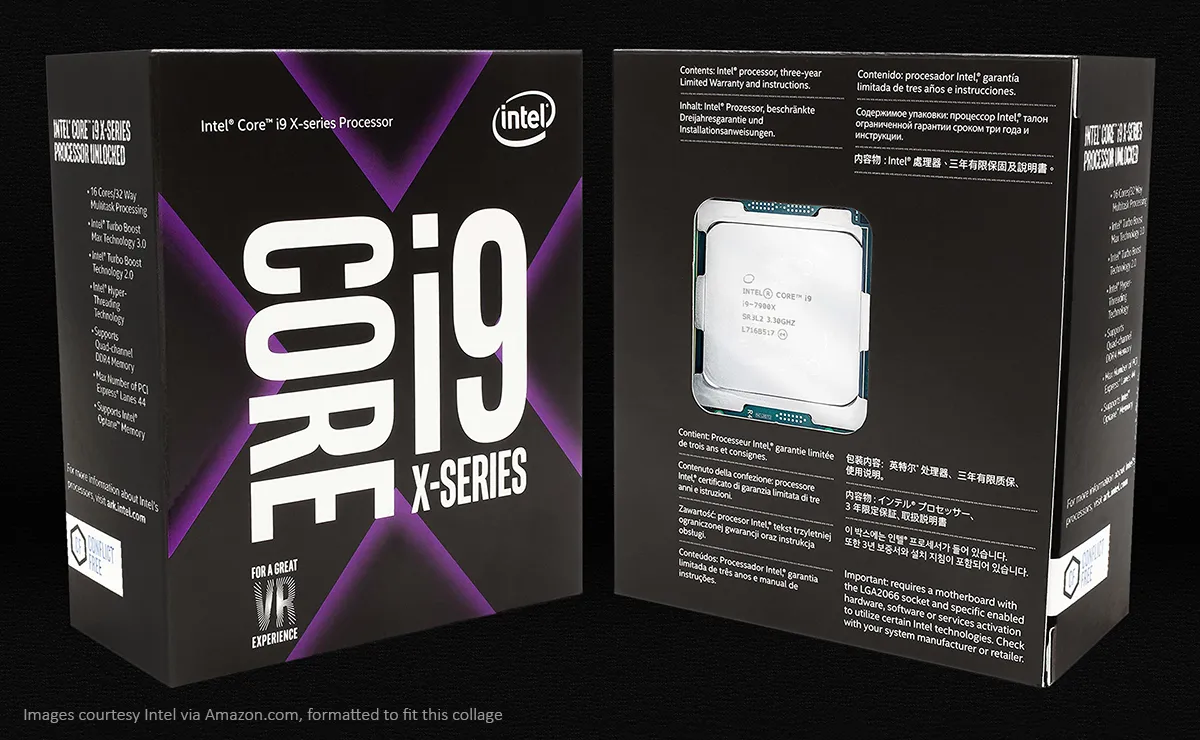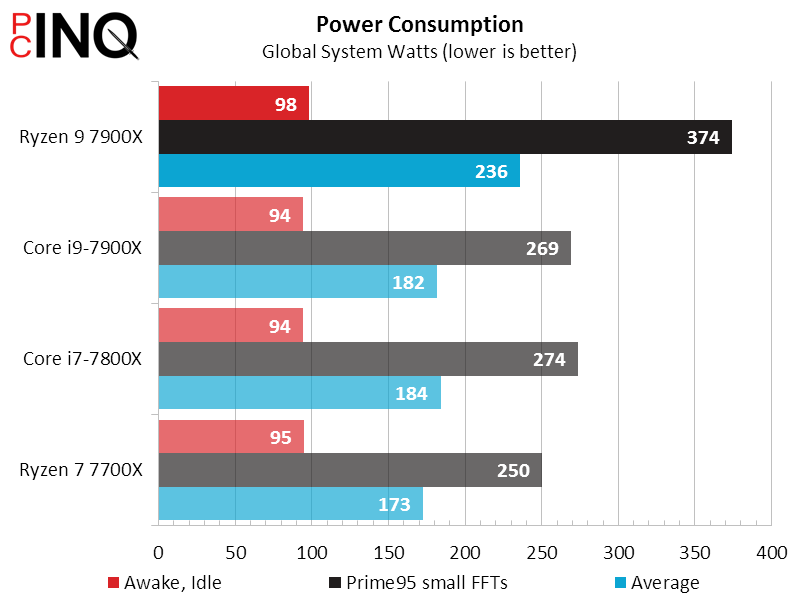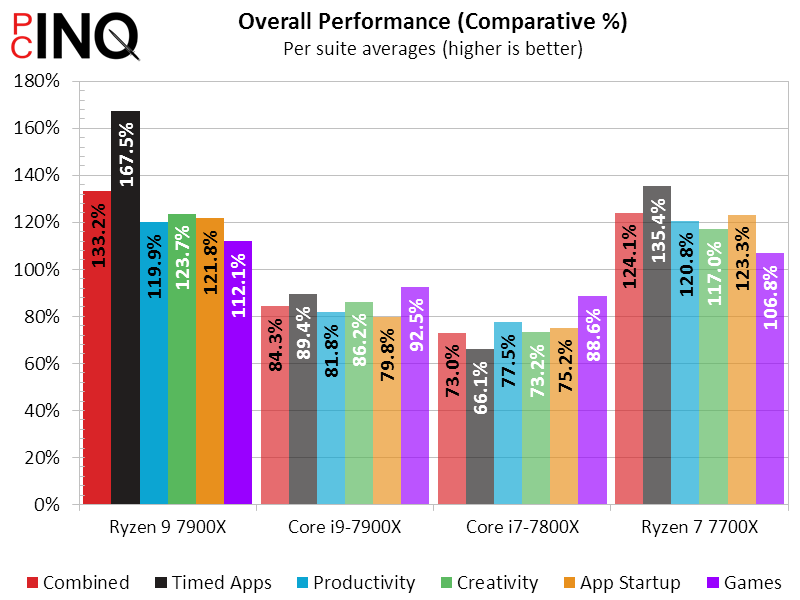Core i9-7900X Vs. Ryzen 9 7900X: Can Intel Finally Beat AMD?
It’s often all too easy for us to forget that in the x86 world there are only two kinds of processors: Original Intel and licensed copies. We’re so often amazed at what the company that makes authorized knock-offs does with this tech that we start to think of this as its technology. We can’t even think of any direct parallels: If a supplier that produced shoes for Nike struck out on its own, it’s not like Nike could claim it owned the concept of shoes. Intel owns the x86 instruction set.

But that leaves us with big questions: How did the “authorized duplicate” company come to represent the pinnacle of the performance market? And, as the owner of the underlying tech, can Intel take back its market position?

A quick look at the interfaces provides a few clues: Intel has the capacity to build out with larger silicon that contains more pathways to more devices on a larger socket. Meanwhile, AMD leans on bleeding-edge tech like PCIe 5.0 and DDR5 to accomplish similar goals at a lower price. Unquestionably, the bigger socket’s extra pins and pathways command the pricing premium of Intel’s HEDT, but so do the PCIe 5.0 repeaters and pathways of AMD’s most advanced mainstream platform. If AMD can hold onto anything in this round, it will likely be the ability to scale the tech down on cheaper boards by excluding features. But before we get to that, we’re going to need to see how this part benchmarks!
| Test Hardware | |
| CPU Cooler | Alphacool Eisblock XPX CPU, Eisbecher D5 150mm, NexXxoS UT60 X-Flow 240mm |
| Motherboard | ASRock X670E Taichi: Socket AM5, BIOS 1.09 Asus ROG Strix X299-E Gaming: LGA 2066, BIOS 3701 |
| Graphics Card | Powercolor Red Devil Radeon 6750 XT: 2324-2623MHz GPU, 12GB GDDR6 |
| DRAM | G.Skill F5-6000J3038F16GX2-TZ5N 2x16GB (32GB) DDR5-6000 CL30-38-38-96 1.35V G.Skill F4-3600C16Q-32GTZN 4x 8GB (32GB) DDR4-4600 CL16-16-16-36 1.35V |
| Power | be quiet! Dark Power Pro 10 850W: ATX12V v2.3, EPS12V, 80 PLUS Platinum |
| Hard Drive | Sabrent Rocket 4 Plus 2TB PCIe 4.0 M.2 SSD |
| Sound | Integrated HD Audio |
| Network | Integrated Wi-Fi |
| Graphics Driver | AMD Adrenalin Edition 2022.10.1 |
ASRock’s X670E Tachi has been with us since the AM5 Platform launch and with it, G.Skill’s EXPO-configured DDR5-6000 CAS 30. Asus’s ROG Strix X299-E Gaming steps in to help us evaluate LGA 2066 processors, and G.Skill’s Trident Z Neo 4x 8GB gets us to a matching 32GB configuration while retaining the platform’s quad-channel capability. Feeding it at CAS 16 seems a bit like cheating, but we’re willing to make some concessions at the end of the article if Intel’s HEDT performance advantage proves overwhelming to AMD’s top mainstream platform.


Intel apparently felt so confident in its underlying technology that it fit the Core i9-7900X with two fewer cores than the Ryzen 9 7900X. We also included a Core i7-7800X to compare to AMD, but found out that AMD’s only 7800 model is an X3D version with an extra layer of cache… It hardly seems fair for us to compare AMD’s 7700X to Intel’s 7800X, but it’s the fastest non-X3D Ryzen 7 that we could find to compare with a Core i7 model. We’ll try to keep this difference in mind when critiquing any major losses.

| AMD Ryzen 9 7900X | Intel Core i9-7900X | Intel Core i7-7800X | AMD Ryzen 7 7700X | |
| CPU Cores | 12 | 10 | 6 | 8 |
| Threads | 24 | 20 | 12 | 16 |
| Base Clock | 4.7GHz | 3.3GHz | 3.5GHz | 4.5GHz |
| Boost Clock | Up to 5.6GHz | Up to 4.5GHz | Up to 4.0GHz | Up to 5.4GHz |
| L1 Cache | 768KB | 640KB | 384KB | 512KB |
| L2 Cache | 12MB | 10MB | 6MB | 8MB |
| L3 Cache | 64MB | 13.75MB | 13.75MB | 32MB |
| Stated TDP | 170W | 140W | 140W | 105W |
| CPU Socket | AM5 | LGA 2066 | LGA 2066 | AM5 |
Benchmark Results
Intel’s 7900X quad-channel memory controller tears out of the gate leaving all others in its wake, including its own 7800X quad-channel memory controller. AMD’s 7900X does a similar thing to its 7700X in AIDA64, but is again beaten badly by the i9-7900X.




3DMark prefers AMD’s version of the 7900X, and even its 7700X beats the Core i9-7900X. We’d hate to accuse its maker of playing favorites, but find the idea of AMD having twice as much performance per thread as Intel preposterous. We noticed that the same company’s PCMark benchmark also performs similarly, and will keep that in mind as we move towards real-world tests.








At every setting, the Core i9-7900X and Core i7-7800X trail the Ryzen 7 7700X in F1 2021. Well, at least it’s not by the huge difference seen in 3DMark and PCMark, right?

We’d question the priorities of 7-Zip’s benchmark design team, except that we’re seeing the same pattern in both Cinebench and Corona Benchmark. All three synthetic benchmarks are based on the code of real-world applications.



Getting down to real-world timed benchmarks, it’s time for us to face the fact that nothing can rescue Intel’s same-named processors. The Core i9-7900X is weaker than even the Ryzen 7 7700X, except in synthetic memory bandwidth charts. Unfortunately, nobody builds a PC just to win memory bandwidth contests.

Power, Heat & Efficiency
Just when we thought AMD had made a fool of our optimism for Intel’s HEDT processors, we see something kind of cool in the power charts. Perhaps the Core i9-7900X was holding back to save power?

What we’re seeing in temperatures is also a result of power throttling, where the Core i9-7900X clocks lower than the Core i7-7800X to retain the same power envelope. Its lower clocks produce less heat.

Regardless of its low power numbers, there’s just no way for us to justify the Core i9-7900X’s lower performance. We’re talking about an Intel HEDT processor of the same model that gets only 2/3 the performance of its AMD licensee.

We cannot underscore the point of such a large performance difference. Even with its low full-load power consumption, the Core i9-7900X is 20% less efficient than the Ryzen 9 7900X. As for those who want to save money on energy, the Ryzen 7 7700X is the efficiency champion.

Had the firm wanted to remain competitive, you’d think that all of these losses would have lead Intel to drop its prices, yet we see the Core i9-7900X carrying a $450 price that’s been constrained to $420 only via a temporary discount.
Get it at Amazon

(click for availability)
Meanwhile, the AMD Ryzen 9 7900X that launched at $550 all the way back in August has already dropped to $426 as the firm refuses to concede even pricing leadership to the firm from which is leases its IP.
Get it at Amazon

(click for availability)
With advantages in clocks, core count, per-core performance and interface standards, one might begin to wonder whether AMD might just push Intel out of the consumer market entirely…turning a once proud manufacturer into nothing more than an IP holding company. But as many of you know, there’s more to this story…
The More You Know
Even though the data and images of today’s comparison are genuine and fresh, it may not have escaped you that the Core i9-7900X launched way back in June of 2017, or that AMD is the brand known for recycling the model names of its competitors. Among those whose model number awareness isn’t so keen are surely many whose calendar awareness is, but if you’re still confused, please check this article’s published date again. If your local customs don’t reinforce this type of tomfoolery, please look to see how others are celebrating the day.
As for us, we’re still searching for a GeForce FX 5700 and a Radeon RX 5700 to compare.
